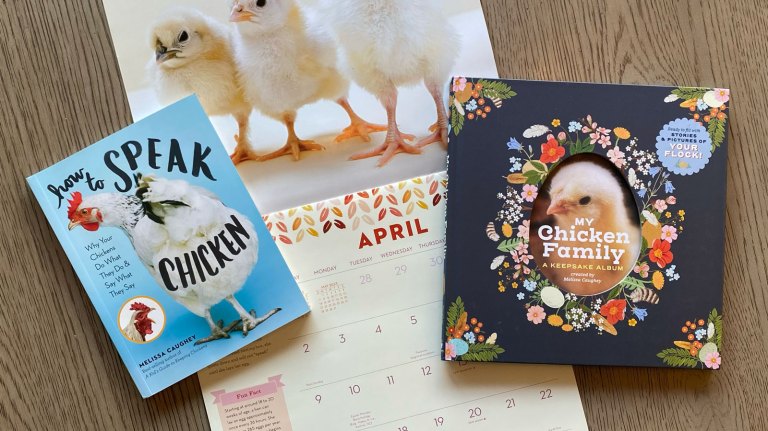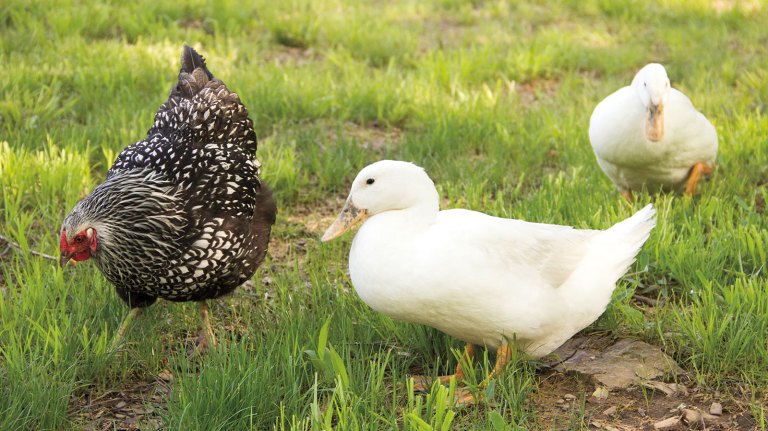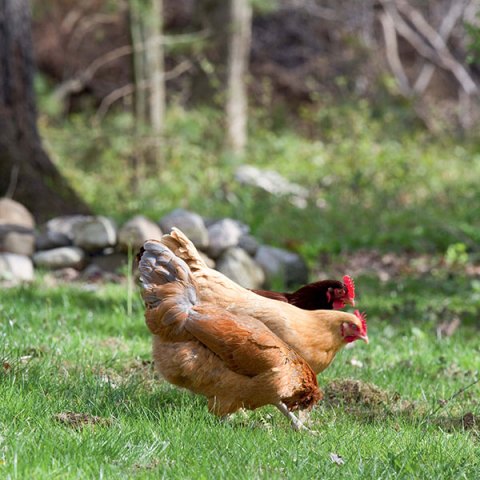Winter Blanket Tug-of-War: A Horse Owner’s Dilemma
Winter blankets are intended to protect horses from cold temperatures and inclement weather. But do we blanket our equine friends more for their comfort, or our own?
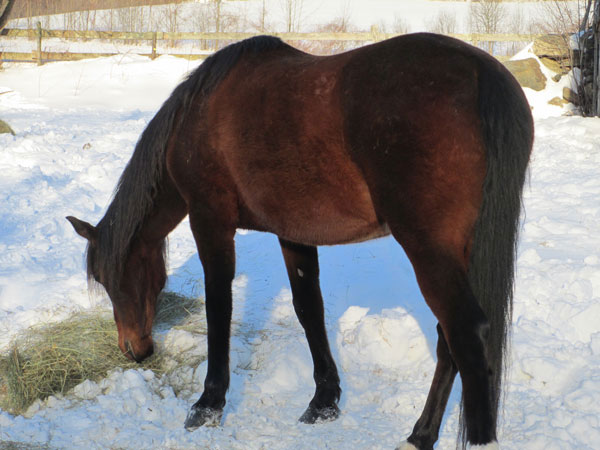
My Morgan mares look more beautiful than ever in winter. Their coats are deep bright bay — Robin’s redder, Martha’s darker — clean and fluffy with an extra shine that seems to come from within. During storms they are frosted thick with snow, like lovely chocolate cakes. Icicles clink in their long manes and snowflakes spangle their eyelashes.
They have stalls to go into, if they choose. Often they choose otherwise, even during cold rainstorms. I’ve never seen them shiver. On especially cold mornings if the footing is good, a wild rumpus takes place as they warm themselves up, but mostly they warm from within with plenty of hay.
Meanwhile I drive by barns and houses, seeing the horses turned out in bright, snug blankets. I enjoy the sight. It’s colorful, and I feel the satisfaction of the owners who’ve paid for these blankets, new ones every year, and so attentively put them on, feeling like they’re doing the right thing.
Are they?
Let me say right up front, this isn’t about the equestrian’s native tendency, stoked by social media, to condemn the way others care for and handle their animals. Really, I just want to be sure I’m doing the right thing by my own horses. So I was glad to read the well-documented article by Natálija Aleksandrova, “Thermoregulation In Horses In A Cold Time Of Year,” reprinted this month in The Draft Horse Journal from the Holistic Horse and Hoof Care blog. It confirmed some things I knew already, and put a bit more science behind my hunches.
Horses survived the Ice Ages by evolving many defenses against cold. We humans think of cold as something that happens on the skin. Really, the key issue is thermoregulation. Horses need to maintain an internal body temperature of around 100.4°F, and many body systems help them do so.
A horse’s skin itself is relatively thick, insulating them from cold.
A longer winter coat increases insulation. The horse can make the coat still more insulating through piloerection: raising and lowering the hairs, or aiming them in different directions. Piloerection can increase coat depth by 10% to 30%. It’s like having a Mountain Horse jacket with the zip-out lining and armpit vents. (We have piloerection muscles too, but lacking an effective coat of hair, all we get is goosebumps.)
A natural grease on the hairs repels water, channeling it down the outer coat while the horse’s body remains dry. Grooming can remove that coating, so resist the urge if you are keeping your horse naturally. (This is something I was told 45 years ago by my 4-H leader.)
Constriction of arteries in the skin reduces the amount of blood brought to the surface. Blood at the surface gets cooled, and on returning to the core, can contribute to a drop in temperature.
Body fat is also good insulation. It has low thermal conductivity and not much of a blood supply. This is why horses have evolved to put on weight in the autumn, up to a 20% increase. (In Korea, October is known as the time of “high skies and fat horses.”) Fat is so effective that it can alter hair growth patterns. Fatter horses typically grow a shorter coat than thinner horses.
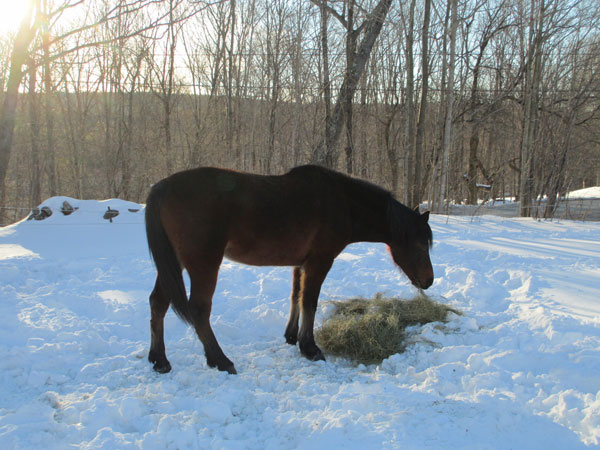
Large size is an asset in cold weather. The ratio of surface area to body mass decreases with larger size. This explains why smaller horses and foals put on a heavier coat than larger horses do.
Being round is better than being flat. Northern types, including draft horses, native breeds, and ponies, tend to have heavier bodies with shorter legs and long, thick manes. On a compactly-built horse, a heavy mane can provide significant insulation to the neck and shoulders. Horses built like radiators, long and flat, are more apt to feel the cold.
The process of digesting fiber also produces heat. The horse’s cecum is like a wood stove inside him, raising his body temperature. This is why horses need more feed during cold weather. The smaller the horse, the greater the increase required. In extremely cold weather, best practice would be 24/7 access to hay, especially during a period of rapid temperature drop.
Horses are less active in winter. This helps them conserve energy. Yes, they may run around briefly to warm up, but for horses kept naturally, winter is a time to stand around, share body heat with a buddy, and catch some rays on the south side of the barn.
So horses are superbly equipped to deal with cold and storms. Blanketing messes with some of their hard-won adaptations. A horse can’t turn up the temperature just in the exposed parts of his body — legs, neck, belly. It’s all or nothing. (While your house might have zone heating, your horse does not.)
In trying to warm exposed areas while blanketed, the horse can overheat and sweat under the material. The blanket then prevents the hair from air-drying, and the horse can end up getting chilled.
Constant blanketing can cause the hair erector muscles to become weak through lack of use. The same thing goes for the muscles that constrict and dilate the arteries. Then the horse “needs” a blanket because he can’t activate his natural systems. If continually stabled and/or blanketed, he may also fail to lose that October fat reserve.
Bottom line: if you blanket them, they will need to be blanketed. If you don’t, most horses will fully develop and use their own body systems to keep themselves comfortable and healthy.
Of course, horses have opinions about all this. A recent Norwegian study trained 23 horses to use abstract symbols to request a blanket be put on, taken off, or no change. They most often requested to have blankets removed, and were usually found to be sweating underneath them, though the day was cool.
Horses often take matters into their own teeth, and having removed a blanket through some Houdini-like maneuver, discover what these expensive items may be best for — shaking, running with, and playing tug-of-war.

